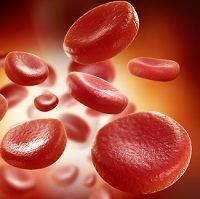News
Article
Tregs, Blood Monocyte Subtypes Shown to be Targets for Treating Patients with Gout
Author(s):
This analysis resulted in several valuable insights related to the landscape of gout patients’ changes in their blood immune cells between flares and periods of remission.

Blood monocyte subtypes and Treg cells are possible targets for health interventions designed to keep gout patients from recurring flares and progression, according to recent findings.1
These findings were seen in a new analysis that highlighted the unique responses of immune cells and the patterns of systemic inflammation seen in gout patients’ transition between flaring to remission.
This research was led by Hanjie Yu and Wen Xue, from the Center for Nephrology and Clinical Metabolomics and Division of Nephrology at Shanghai Tenth People’s Hospital in China.
“Single-cell RNA-Seq (scRNA-Seq) has emerged as a powerful tool for generating unique gene expression profiles of individual cells…” Yu, Xue, and colleagues wrote. “In this study, we demonstrated how the landscape of blood immune cells changes between gout flares and remission, thereby offering valuable cell type–specific markers that could be utilized for potential targeted immune therapies.”
Background and Findings
Prior studies had covered the part played by blood neutrophils in gout flare resolution among patients, and in vitro research conducted recently looked at the connection between adaptive immunity and flares/remission.2,3 Nevertheless, the investigators sought to expand the comprehensive understanding of both the inflammatory and immune responses of patients with gout, looking into subsequent remission as well.
The research team used single-cell RNA-Seq as well as an independent validation cohort for the study. They first normalized and then clustered the gene expression matrix, performing a dimensionality reduction through the use of t-distributed stochastic neighbor embedding (t-SNE) and then graph-based clustering, which yielded 11 total clusters.
The clusters, which were identified based on known marker genes, were put into 4 specific cell lineages:
- T/NK cells (clusters 1, 3, 4, 5, and 6; CD3D, CD3G, NKG7)
- Myeloid cells (clusters 2, 8, 9, and 10; HLA-DRA, CD14, FCGR3A)
- B cells (cluster 7; CD79A, CD79B)
- The unknown cell type (cluster 11)
Myeloid, T, B, and NK cells make up a substantial portion of the cellular landscape, and there was no notable distinction as far as composition between patients’ flares and remission. These results implied to the research team that there were possible alterations in morphological, genetic, and functional levels within the subtype cells.
Subsequently, the investigators conducted a detailed set of assessments looking into the primary cell types. These were conducted to uncover distinctions between remission states and flares of gout among the subjects.
Overall, the research team reported a possible mechanism for flares in gout which was shown to have involved the upregulation of HLA-DQA1+ nonclassical monocytes. This was linked to antigen processing and presentation in patients.
Treg cells, the investigators found, were shown to have played a substantial part in suppressive capacity at the time of subjects’ gout remissions. The team’s analysis of cell communication ended up showing that there had been altered crosstalk between the monocytes and the T cell types.
Cytokine and inflammatory genes were shown by the investigators to have been systemically upregulated during subjects’ gout flare episodes, and this was primarily seen in classical monocytes. They also found that all of the monocyte subtypes ended up showing rises in arachidonic acid metabolic activity as well as upregulation of prostaglandin-endoperoxide synthase 2 or PTGS2.
The research team also found that blood arachidonic acid was shown to have decreased, though they noted that leukotriene B4 levels had risen at the time flares in gout had been reported.
“Our results demonstrate the upregulation of PTGS2 in monocyte subtypes that are involved in gout flares and remission,” they wrote. “Therefore, the elevated expression of PTGS2 in circulating monocyte subtypes plays a pivotal role in gout flares and could underpin the molecular basis for the use of COX2 selective inhibitors as a first-line treatment for gout flares.”
References
- Yu H, Xue W, et al. Single-cell transcriptomics reveals variations in monocytes and Tregs between gout flare and remission. JCI Insight. 2023;8(23):e171417. https://doi.org/10.1172/jci.insight.171417.
- Mansour AA, et al. Galectin-9 regulates monosodium urate crystal-induced gouty inflammation through the modulation of Treg/Th17 ratio. Front Immunol. 2021;12:762016.
- Lee KH, et al. Neutrophil extracellular traps (NETs) in autoimmune diseases: a comprehensive review. Autoimmun Rev. 2017;16(11):1160–1173.





